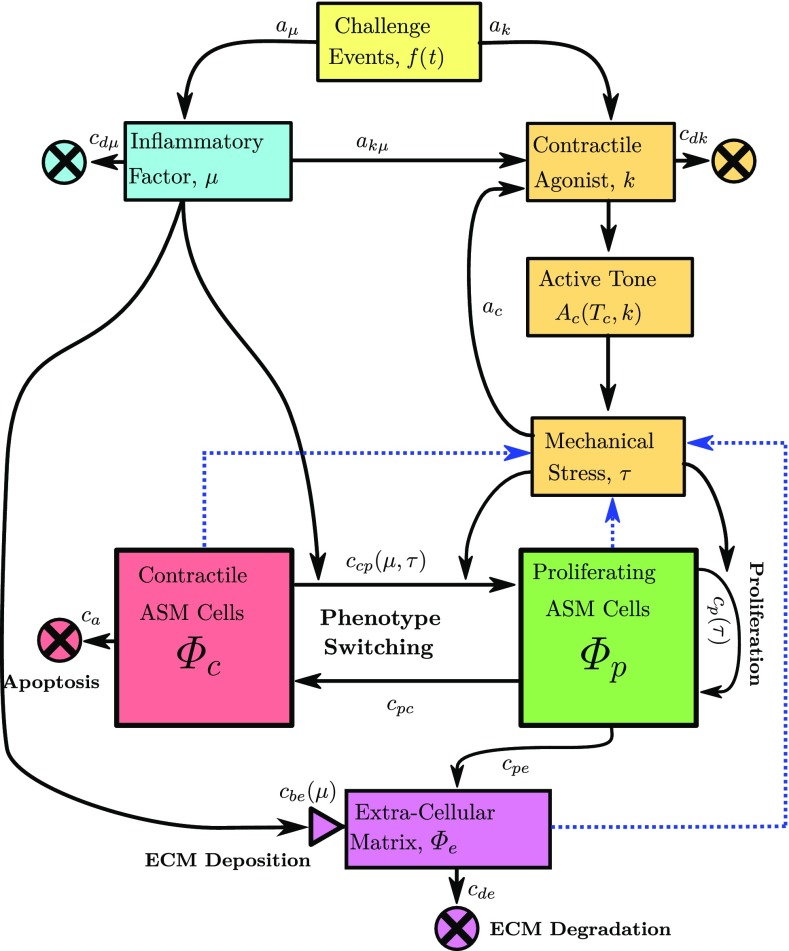Fig. 2.
Overview of the biochemical mechanisms. Allergen or contractile agonist challenges, f(t), specified to occur at times , drive evolution of an inflammatory factor, , and contractile agonist concentration, k. The magnitude and rate of clearance of and k are determined by constants , , and , respectively. Inflammation leads to global release of contractile agonist at rate . Contractile agonist induces local ASMC contraction, and the resulting increased mechanical stress releases further cytokines, with contractile agonist properties, at rate . Contractile ASMCs undergo apoptosis () and switching to a proliferative phenotype (). The proliferative ASMCs divide () and switch to a contractile phenotype at a (high) constant rate (). Both inflammation and mechanical stress drive increases (from a baseline) in the contractile to proliferative switching rate (), and increasing mechanical stress drives increases in the proliferation or recruitment rate (). ECM proteins degrade () and are deposited () at baseline rates during normal tissue maintenance, with the latter increasing with inflammation. Proliferating ASMCs produce additional ECM proteins (with rate ). Blue dotted arrows indicate how constituent volume fractions are required for computation of the mechanical stress (), as illustrated in Fig. 1. Rate constants are given in Online Resource 2

